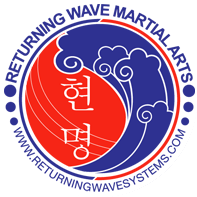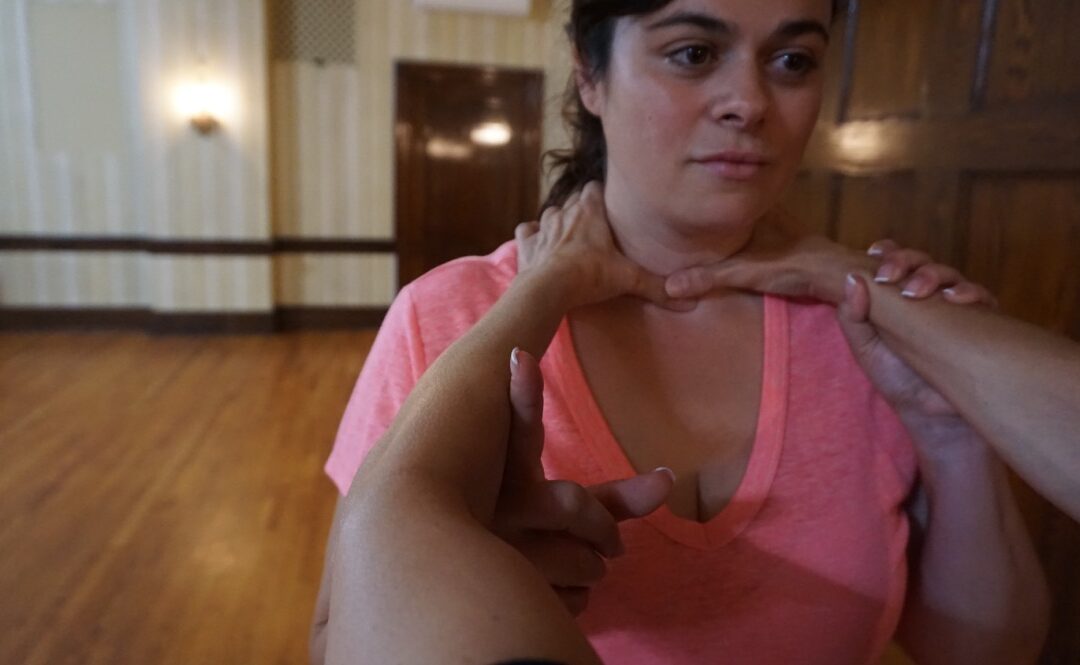By Richard Conceicao (7Dan)
“Kittens are wide eyed, soft, and sweet with needles in their jaws and feet”
We all practice TKD and we know what it is right? It is the art of smashing things in the foot fist way. When we block, we break things, when we strike, we break things. Our hammer fist, strikes like Thor’s hammer.
This is exactly the old school TKD I grew up in. It is, and was, a totally Yang expression of fighting. It is an aggressive art with no room for those aren’t willing to go all out! However, what about the Yin. We are told that there has to be a balance. One can’t exist without the other in Asian philosophy.
I often wondered why this aspect seemed to be missing from traditional TKD. Other arts that are similar seem to incorporate it. Goju karate or, of course, in Judo and Aikido. In these cases the idea of “softness” is expressed right in the name.
The answer? It was there all the time; you just had to look for it. Oh, and be brave enough to be willing to change your techniques and head around.
But first some basic concepts:
1. “Softness” does not necessarily mean “soft”. It can mean flexible, resilient pliable, and more.
2. It tries to blend with, absorb, and redirect force
3. To achieve this, it requires the practitioner be sensitive to the opponents movement and transitions, and maintain a strong centered core.
4. Lastly, “rigidity kills power”
I think that if you really consider the items listed above you can begin to see some of the reasons that this Yin aspect does not appear very often–it takes a lot of skill and training to utilize it effectively! The usual TKD methodology is much easier to explain, understand, and in all fairness, much more immediately effective until a certain level of proficiency has been attained.
Let’s start off with one of the hardest ideas to get–that of how the body interprets feedback and prepares for trauma. Like the old boxers proverb “the punch that hurts you is the one you didn’t see”, the body can set itself up to receive powerful blows when they are seen both in speed and where they will land.
To summarize the concepts briefly:
1. The body can prepare and block unwanted forces. For example have somebody put a wristlock of any type on you. Now resist it. You will notice that you can quite successfully do this, with minor pain. Of course, it can be overcome with enough effort on your partners’ part, but it is quite a lot in comparison to when you are not prepared.
2. A tactile distraction to an attack increases the effect of the attack. You may have noticed that in many older forms (and some newer ones) the attack is preceded by a tap or rub. The opponents’ body reacts to this by trying to interpret it’s meaning. i.e., is this an attack? is this something else? At this point the opponent is far more vulnerable.
This can be easily tested with you and a partner. Strike them once (please not hard!) and have them give you a 1-10 feedback on pain level. Now tap them somewhere else and then hit them with the same force. Ask again, and they will usually say the level was greater. Now rub them across body, hit, and obtain feedback. Almost always they will say this felt as if it had the greatest impact. [2]
Again, this all relates to how the body receives information from the outside world and interprets it, in order to respond. Soft TKD movements and techniques are designed to trick the body’s interpretation into giving you a meaningful advantage.
Let’s start with a simple example before we move on to more complicated ones.
Example 1: Against a Straight Punch
Have your partner step in with a straight punch, which you will block with your standard hard out-to-in middle block. You will notice a few things:


Standard block Plan B in action!
a. Your partners arm will hurt a little, but not enough to prevent him from recognizing he has to go to plan B–hitting you with the other hand!
(PRO TIP: please stop telling students that your block must/will break opponents arm! Unless you have super hero strength and speed, this is a physical impossibility as there is no fulcrum to lever against. At best, you can say “do this AS IF…”)
b. Your opponents’ arm has swung away from you, as his upper body has turned. The relative distance from you has not changed at all. You are now forced to move into him to continue your attack.
Now let’s change it a little:
This time when your partner punches, place your arm in the blocking position (remember your torso is in a half facing position, not straight forward) and allow the incoming arm to slide along the surface of yours as it is deflected away from you.


What has changed?
a. Your arm doesn’t hurt and neither does his.
b. He has slid very close to you, as the momentum of his blow has been totally redirected. So close that you can easily pin his arm to his body, off balance him with a push, or leave him open to a multitude of counter attacks.


c. He has a momentary confusion as to what to do next, as he has had no tactile feedback telling him what exactly happened.
Minimum effort on your part has given you maximal results! Yin concepts in action!
Example 2: Double Choke, Lapel/Shoulder Grab
Have opponent reach forward with this double arm movement. Usually we are taught to come up the middle and smash his arms apart– i.e. a double middle block. Often this maneuver fails as it pits your weakest shoulder muscles against his strongest chest musculature. In addition, the forcefulness of it cues him to press in stronger to prevent you from breaking away.
Now we repeat the same attack but this time we slide up the inside of his two arms until we reach the inner elbow area. At this point turn your hands palm down (pronate them) and press down and separate his arms. It is quite surprising, actually to both of you, how easy it is to do this. The soft sliding motion has not cued his body into realizing that the unexpected is happening.





Your opponent at this point can be pushed back easily by simply walking into and past them.
Example 3: Front Choke Release
Finally, continuing with this particular aspect the two handed front choke.
(Note: This is only an exercise to illustrate a concept. I do not recommend its use for any other purpose!)
Have your partner place his hands on your throat and you will attempt to pry them off by pulling them apart. Even if you are successful, you will find it involves a fair amount of effort

Now begin the same way, but this time take a finger and gently rub the inside of one of his arms from his wrist towards his elbow. As you do this, pull his other hand away from your throat. You will find that it comes away easily! The body has difficulty interpreting the meaning of these two different sensations at one time.



The Two Keys: Relaxation and Rotation
So far we have been dealing with the effect on the other person, now we have to look at ourselves.
Relaxation:
Relaxing is probably one of the hardest things for us to achieve. It takes a lot of practice and discipline. It is however essential for flexibility and power generation. It may sound counterintuitive, but we cannot hit with real impact without being able to relax.
Our joints move because muscles on either side contract to either bend or straighten them. If we cannot relax the ” bending” one, we can’t apply maximum effort to the “straightening” one. You are in essence fighting your self. Remember Bruce Lee made those faces and that noise for the movies only. He never did that in fighting or sparring. As strange as it may seem, those things suck power away from you. Instead, you should just smile, and that is not a joke- it is an actual technique!
There is an interesting sidelight to this in terms of hitting. I don’t want to delve too much in it as this about Yin techniques, but it is worth mentioning. We have all seen the large looping types of arm movements seen in Wushu, numerous Kung Fu movies, even the constantly flowing arms of Tai Chi. They all appear to be windmill like efforts to just build momentum–not true. In actuality, striking with the arm totally relaxed, timed with a dropping of weight feels like a brick hitting you. What is even more fascinating is that strike doesn’t hurt you as much as it would if your arm was tensed up.
Rotation:
One could write an entire book on just this one subject, it is that sophisticated and subtle. I am only going to give a quick overview.
The basic idea is that all of the body joints must rotate in order to be most balanced and effective. This is for both offensive and defensive maneuvers. Since we are focused in this discussion on Yin ideas, lets start there.
We all know that the “chambering” hand is in reality the “pulling hand” but what does this mean in action. The pull never really is straight back as the hand rotates as it pulls back. So, if you have grabbed your opponents’ arm, you are twisting his. Since his arm is connected to his body, you are having an effect on it.
Examples:
1. Grab opponents arm (same side as yours) and chamber your hand. You will notice as you do this his elbow will bend as his shoulder dips and his body rotates towards you. His structure has been broken.
Now–just as a thought experiment-what do you think would happen if you threw a “low block” with the other hand onto the outside of his elbow. Interesting effect, right!
2. Grab opponents arm (cross grab), now this time rotate your hand so it ends up palm down (pronate). Note the similar effect on his body.
Next thought experiment: what if you executed an “out to in middle block” onto that elbow. Another interesting effect.
(Pro Tip: Sometimes you are not strong enough to pull an opponent in by using the normal chamber (i.e. palm up), if this is the case place your grabbing hand palm down (pronate) and then pull. You will find this easier to do as you are recruiting your back musculature to help.
Practice Suggestion:
We tend to do everything in a “set beat” type of way. More advanced practitioners will vary the rhythm of movement slightly, depending on the technique, within the execution of a poomse.
Try doing your forms, keeping the hands open (no fists), at Tai Chi speed, but flowing continuously from one move to the other without stopping. The idea is to remain as “floaty” as you possibly can. Forget about power, concentrate on your bodies movements, especially the twisting and turning of your hips, waist, and shoulders.
Get comfortable with this type of movement, as Part II will be a discussion of “Wave Forms” in striking and moving–and I Don’t Mean “Sine Wave”!

